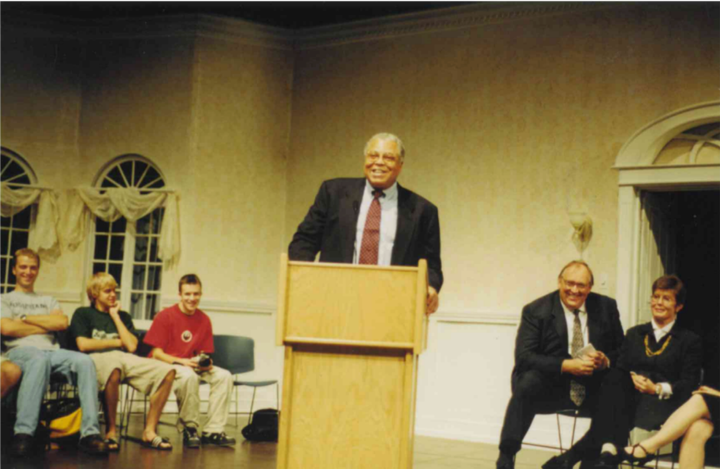Saving the Big Sioux from being the ‘Big Sewer’
JESSICA RUF
jnruf15@ole.augie.edu
Intense droughts, rising sea levels, stronger hurricanes—climate change is daunting, and it’s easy to feel powerless. After all, what can one person do to prevent what feels like an approaching apocalypse? More over, what can one South Dakotan do?

Here, in the midwest, climate change feels like a faraway problem for coastal cities and tropical climates. There are no hurricanes, no melting ice caps and thus, nothing to worry about.
But when growing numbers of citizens and government officials put environmental issues on the backburner, Midwesterners must keep themselves from falling into the same passivity. We must do our part and begin working on our own backyard.
For Sioux Falls residents, beginning in the backyard means tending to the waterway meandering behind neighbood fences, past downtown streets and alongside greenways: the Big Sioux River.
The river is a cornerstone of Sioux Falls’ identity (it is afterall, the city’s namesake). Search “Sioux Falls” on Google images, and eighteen out the first twenty five photos will feature the river, namely Falls Park.
But anyone who has seen the Big Sioux knows the disappointment it can bring.

There is the foam which forms around rocky ravines, the brownish water which turns green in the sunlight and the litter which occasionally appears in the current. And of course, there is always the question, “What is that smell?”
It’s been that way for 18 years now. Since 1999, the Big Sioux River has resided on the Impaired Water Quality list for South Dakota, and it’s not alone.
Of the 5,858 miles of rivers and streams in South Dakota, the Department of Environment & Natural Resources found that only a fifth were clean found enough for “designated uses,” such as irrigation, fishing, swimming and even limited contact recreation (i.e. kayaking or canoeing).
The unhealthy levels of E. Coli, fecal coliform bacteria and total suspended solids are what make the Big Sioux part of the 80 percent of unclean waters in the state.
The waste typically comes from urban sources, agricultural runoff and livestock yards and not only affects organisms in the Midwest, but marine life 1,000 miles away in the gulf of Mexico too.
Every summer, fish and other organisms die from lack of oxygen in the Gulf of Mexico’s dead zones created by Midwest pollution draining out of the Mississippi river.
While the Big Sioux is far from clean, it is improving, partly in thanks to Mayor Mike Huether who has pushed the city to fund environmental projects.
Since 2013, Sioux Falls has taken $5 million in revolving state fund loans to improve the Big Sioux River and Skunk Creek upstream (about 60 percent of Big Sioux’s water comes from Skunk Creek).
The programs compensate farmers for building environmentally conscious barns, planting buffer zones between their cropland and the river and putting up shelters for livestock to cool themselves under instead of wading in the water.
On Sept. 20th, Huether led his fifth annual Big Sioux Water summit in Watertown, S.D. where he openly criticized climate change deniers and called for city residents and developers to dedicate themselves to creating environmentally-friendly cities. He said he wants South Dakota to be a leader in urban water protection.
But because Huether’s term is set to expire in 2018, it’s important that Sioux Falls citizens elect a mayor who is also aware of the effects environmental problems pose, especially at a time when the current federal administration is not.
In July, the Environmental Protection Agency announced that it would grant South Dakota $2.5 million dollars to put towards cleaning “nonpoint” pollution (i.e. fertilizer and manure runoff) as part of the EPA’s section 319 program.
The announcement was good news for the Big Sioux’s waters which are affected by nonpoint pollution.
But if EPA Administrator Scott Pruitt’s proposed budget cuts from last spring go into effect, the section 319 program would vanish along with the millions of dollars towards cleaning South Dakota’s waters.
We, as Sioux Falls residents and citizens, should not only write our representatives and vote for climate conscious individuals, but also take actions ourselves by reducing our own fertilizer use, by not pouring waste down sewer drains (anything that enters the sewer, enters the river) and by simply appreciating the beauty and resources the Big Sioux provides to the city.
Climate change is daunting and protecting the Big Sioux is only another teaspoon of water thrown onto the fire, but it is a contribution nonetheless, and that alone makes it worth doing.



